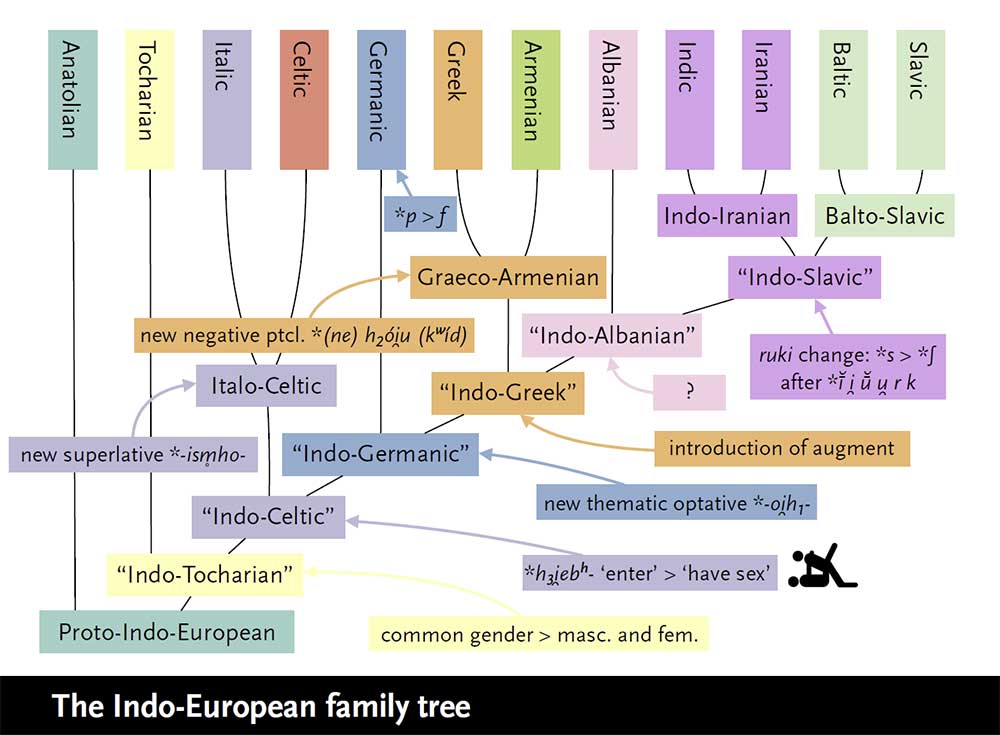Nearly half the world’s population speaks one of the languages derived from a single ancient tongue, dubbed Proto-Indo-European, or PIE. Mainstream scholarship places the Proto-Indo-Europeans in the forest-steppe zone immediately to the north of the western end of the Pontic-Caspian steppe in Eastern Europe. Or more simply a bit north of the Black Sea. Linguists have long argued that PIE first spread from there to Europe some 6,000 to 5,000 years ago. Some archaeologists would extend the time depth of PIE to the middle Neolithic (5500 to 4500 BC) or even the early Neolithic (!) (7500 to 5500 BC). An alternative hypothesis posits that PIE spread some 8,000 years ago from what is now Turkey, after the introduction of agriculture into those regions. In other words, a bit south of the Black Sea. The latest evidence from evolutionary biology and ancient DNA samples, rather than settling the issue, is adding to the controversy.
This flow chart or family tree should be read from the lower left-hand corner up and outward ending at the top left and top right.

I love that the only image to make the cut here is two icon people having sex. Anyway, wherever the point of origin, the evolution of PIE into dozens of languages appears to be solid science using the technique of linguistic reconstruction. Below is an attempt to reconstruct the sounds of spoken PIE based on this research.
It’s fascinating to look over proto Indo-European vocabulary and see how many of the words bear a trace of resemblance to current languages. Here is a big list of nouns.
I believe there is an essential connection between this rapid spread of a common root language and the tumultuous viral lifestyle shift from Paleolithic to Neolithic. A bit about that can be found here: Sea Change. A related and fascinating piece of this story is that many fairy tales, even some still in use today, turn out to be over 6000 years old. This places them inside this the same zone time zone as the spread of PIE and the mass migration from tribes to settled, far larger communities. Here’s a reference to that discovery.